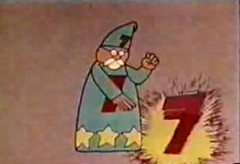Privileging the optical
Tonight was viewing night at the Leitner Observatory, a fact I remembered around the time the viewing began, deep enough into a night in early October to see some stars in the city, and I gathered my things quickly and left, taking those streets that offered the most privacy for writing. When I arrived at the observatory, a flat, white building with a couple of silver domes open to the sky, the whole thing perched atop a hill in a park bordered at the bottom by university greenhouses and gardens, the graduate assistant who hosted the event and ran the telescope was telling some visitors that she had seen Hale-Bopp but not Halley’s Comet, the fizzle at the end of the space race whose star-trail burned most brightly in the cosmological imagination of American children who had absorbed space movies and PBS children’s science and science fiction as life-stuff during the years of Carter and Reagan, whose primary sense of wonder emerged or sort of opened out of a set of ways of framing backyard star views, and whose whole aesthetic/narrative vision of stars and space lost its plausibility and appeal not with the slow non-event of the comet’s failure to show up to the naked eye but with the daytime explosion of the Challenger on January 28, 1986, after which the curved and graphically simple letters of NASA could only signify something in the past. The telescope was aimed at Albireo, a double star in the constellation of Cygnus, a yellow star above a blue one, and I looked at it twice, once just looking and then more analytically and greedily after bolting back up the ladder to the eye-piece to confirm a vision that had become improbable in memory and would never, after the telescope was rotated, be available again. The Ring Nebula was next, and the rectangular opening in the dome shifted slowly around to reveal to a different slice of the night sky. The assistant said that the best way to view the nebula, the “leftover outer envelopes of a dead star,” was indirectly, by looking to the side and letting the thing appear gradually in the corner of one’s eye, a little knotted circle of light at the center of a sort of radiating tunnel or halo you could only ever seem to see, and to make it easier to see she put out the lights in the dome and threw a cloth over the computer screen. Last was globular cluster M15, a patch of the Milky Way dense enough to be considered a single object, thousands of “stars born together, suns as bright as ours, and bound to each other by gravity.” I asked the assistant a couple questions about the observatory to learn by what sorts of steps it mediated our experiences of these distant objects. The computerized star chart that controlled the position of the telescope was not fed by any real-time monitor of celestial objects but was just a list of what was visible when and from where, a summary of calculations astronomers did long ago on paper and that would be reliable for hundreds of years; the image in the view-finder was not an electronic or digital reconstruction, but, at the end of a series of lenses, a composition in natural light.


0 Comments:
Post a Comment
<< Home